Вы здесь
Sultan Uvais Bobo necropolis.
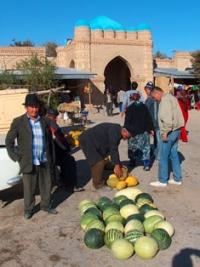
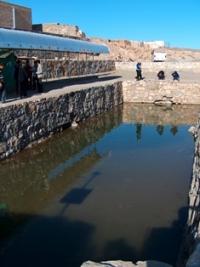
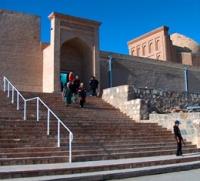
Nukus tour.
"If you are smart and wise, take care of the poor
How Mustafa Gather and Take Care of Orphans Everywhere
From the greedy and mean, stay away
Save yourself and become like a full-flowing river "
"Hikmets" of Khoja Ahmed Yassavi.
Excursion tours in Karkalpakia.
The Sultan Uvais necropolis is located on the southern slope of the Sultan-Uvais ridge, between the Kokralysay tracts in the east and Kazgansai in the west, from the south of the mausoleum there are low Kazantau mountains, 17 kilometers from the right (eastern) bank of the Amu Darya river, 8.4 kilometers to the north and a little to the west of the village of Kalandarkhan, 31.8 kilometers southeast of the village of Karatau in the Beruniy region of the Republic of Karakalpakstan.
The Sultan Vais Bobo necropolis is a cult complex on the southern slope of the Sultanuizdag (Sultan Uvais) ridge (literally - “Mount Sultan Vaisa”), belonging to the Karatau mountain system in Karakalpakstan. The center of veneration of one of the most famous Muslim ascetics, Uvais al-Qarani, a contemporary of the Prophet Muhammad.
In Khorezm, he is called Sultan-bobo (“bobo” in Uzbek - elder), or Sultan Vais. The mausoleum is surrounded by massive mazars (cemeteries). Above, on the mountain, there is a holy place, where the ministers point to the fossilized footprints and knees of Sultan Vais, claiming that the saint here begged forgiveness from the Almighty for all Muslims.
Parts of the Sultan Uvais complex are located among the old cemetery and in its surroundings.
Sultan Uvaisa complex includes:
1. Chinor Bobo mausoleum at the highest point of the cemetery. Traditionally, pilgrims first visit this mazar, and then go to the tomb of Sultan Vais. This rule follows from the belief, according to which Chinor-bobo, according to some sources, was an ustaz (teacher), the feast of Sultan Vais, according to others - his muezzin (proclaiming the adhan - a call to prayer in a mosque), according to the third - a sartarosh (barber) of the saint.
Sultan Bobo respected him so much that he commanded: "He must be on top." Therefore, the Chinar Bobo mazar stands higher on the slope, and the pilgrims make ziarat (pilgrimage) first to it. However, regarding the personality of Chinar Bobo, there are no biographical data or sources, and researchers (in particular, G.P. Snesarev) are inclined to believe that this is a legendary character associated with local beliefs, and the name "chinor" (plane tree) may indicate that this tree once grew here, or be a relic of pre-Islamic beliefs.
The complex of the mausoleum is surrounded on all sides by a cemetery with tombstones lined up in rows around the hills.
2. Mausoleum of Sultan Vais Bobo on the southern slope of the hill.
3. A sacred source in front of the entrance to the Sultan Bobo sanctuary, according to legend, flowing out from under the feet of the buried saint, and a sacred pond (hauz) fed by this source, with sacred fish living in it.
4. The dry bed of a stream that once flowed from a source and a pond, along which women pilgrims pass and build obo (ritual cone-shaped and pyramidal structures made of stones) in the hope of getting rid of infertility.
5. A mountain with Obo, two or three kilometers from the mausoleum, on which, according to local legend, Sultan Vais Bobo stood on his knees for 40 days, begging the Almighty for forgiveness to all Muslims and on which he knocked out all his teeth as a sign of solidarity with the Prophet Muhammad, who lost a tooth in the battle of Uhud (Okhud).
6. In the southern half there is a mosque with an aivan, a number of hujras and a living room.
During the reign of Allakulikhan (XIX century) in honor of the shaikh, a large mosque and 10 chillakhanas (a special room for the fasting ritual) were built here. The entrance to the complex is designed from the west.
For many centuries of its existence, the mausoleum of Sultan Vais Bobo and the vast necropolis around it were overgrown with a mass of outbuildings - mosques and hotels for pilgrims, oshkhon (kitchens), places for offering sacrificial animals.
Architecturally, all the buildings of the complex are modest, unassuming, do not differ in luxurious decor and external dressing. The building of the Sultan Vaisya mausoleum and the mosque located opposite it are built of yellow baked bricks, crowned with domes covered with square unglazed clay tiles.
The small courtyard is whitewashed with white lime. At the entrance to the mausoleum, there is a sacred hauz in the form of a large rectangular reservoir, in which water flows through underground springs. In past centuries and even back in the Soviet years, the entrance to the source resembled a grotto and consisted of rocky cliffs in shale rocks.
There are fish in the khauz that no one eats, and the dead fish are buried in a special ritual. To bathe in the waters of this spring is one of the main goals of the pilgrim. According to popular beliefs, Sultan Vais served as a shepherd in these places, and an underground spring (bulak) gushed out at the place where his foot stepped.
On the upper part of the foothill massif, one and a half to two kilometers from the Sultan Vais mausoleum, there are several small rounded depressions, which, according to local residents, are prints of the legs and knees of Sultan Bobo.
An open area for parking cars is organized here, in addition, there are rows for merchants selling amulets and other religious paraphernalia. A path that climbs up to the cliffs leads to small sanctuaries, consisting of tree branches covered with stripes of brightly colored fabrics.
Similar ceremonies and offerings are performed by believers in the hope of fulfilling various requests - to heal a sick person or a woman from infertility. Local legends link the wonders of Uvais al-Qarani with the very origin of the Karatau mountains.
When Uvais, who was grazing his flocks, was informed that the Prophet Muhammad had one tooth knocked out by a stone in the battle with the infidels at Mount Okhod, the righteous man also wished to lose a tooth. But since he did not know which tooth Muhammad had lost, he knocked out all 32 of his teeth.
Another legend about the Battle of Siffin says that when the enemies surrounded Hazrat Ali, Uvays came to his aid. He grabbed 96 stones in the floor of his robe and began to throw them at enemies. As soon as he threw one stone - and many enemies were killed at once.
When he scattered all the stones, the enemy hordes were defeated to the last warrior. Sheikhs-caretakers of the Sultan-bobo sanctuary, retelling this legend to the ethnographer Gleb Snesarev in the 70s of the XX century, argued that these amazing events took place not in Syria, but in the Sultanuizdag mountains.
By the mid-2000s, the legend already said that the Karatau mountains themselves were formed from knocked out teeth, with which Uvais al-Qarani threw the enemy. In a less fantastic version of the same legend, not the mountains themselves are called the teeth of the saint, but only the ancient ones in the gorge next to the sanctuary.
According to local beliefs, Uvais al-Qarani is able to control the climate, mitigate drought and regulate water levels in wells, multiply yields and influence the fertility of livestock. People with various kinds of diseases, including congenital and mental ones, are often brought to his mausoleum.
Experts point out that in Central Asia, Uvais al-Qarani, a former Yemeni shepherd, also plays the role of a special patron of camels and camel breeding. In Turkmenistan he is called Veyis-baba, and in Kazakhstan he is known as Oysyl-Kara.
Geographic coordinates of the Sultan Uvais Bobo necropolis: N42 ° 00'40.16 "E60 ° 38'43.22"


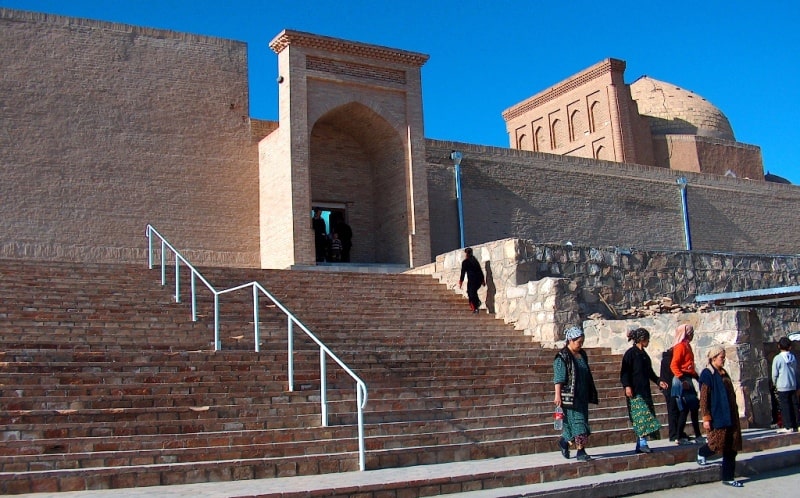
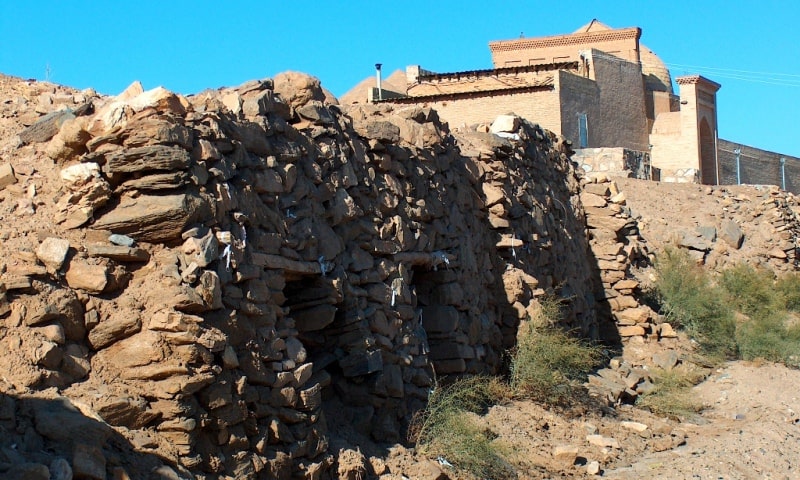
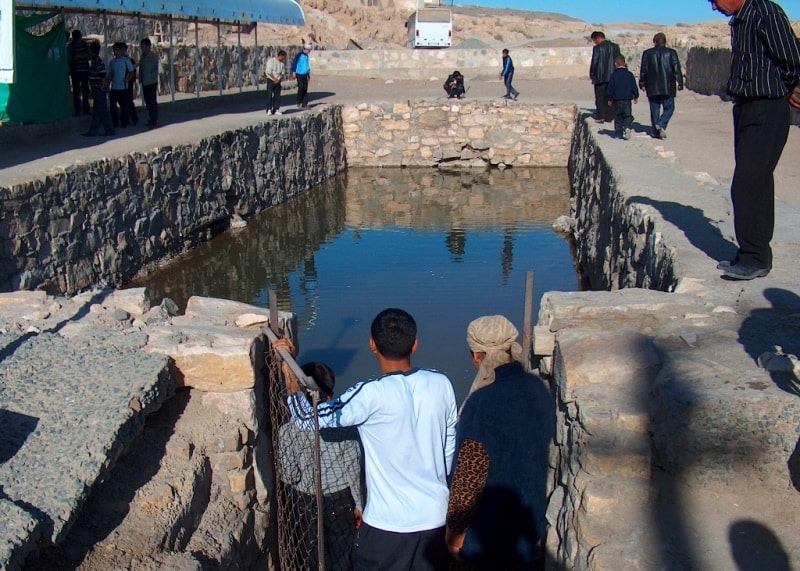
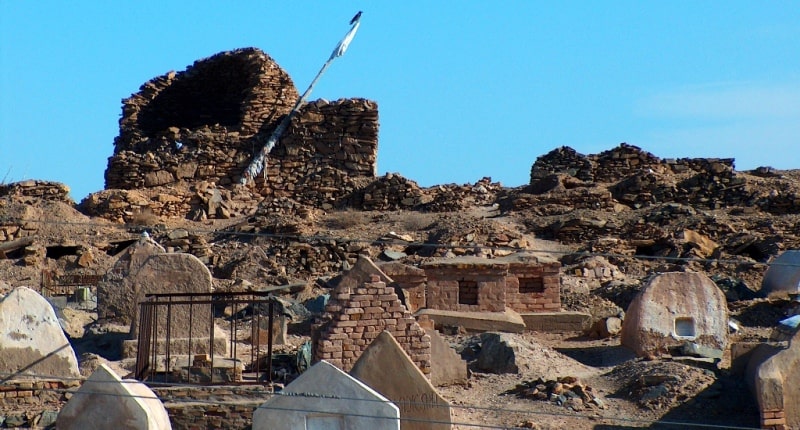
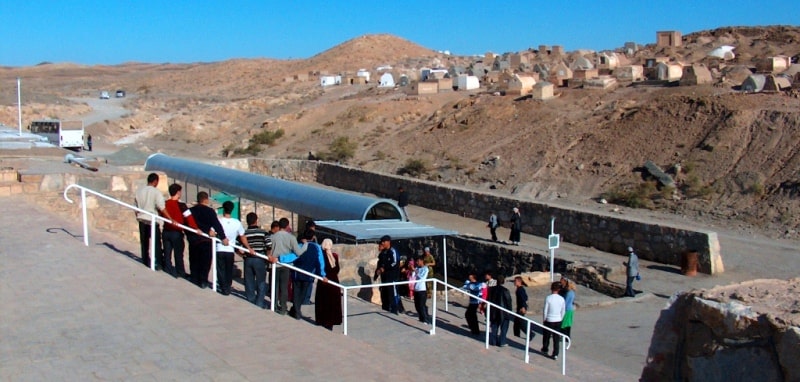


Literature:
1. Snesarev G. P. "The relics of pre-Muslim beliefs and rituals among the Uzbeks of Khorezm." M., 1969. - 336 p., "Under the sky of Khorezm." Ethnographic essays. M., 1973. 160 p., "Khorezm legends as a source on the history of religious cults in Central Asia." M., 1983.S. 80-100.
. Attar Farid ad-Din. "Tales of the Saints." M .: Sampo, 2005.240 p.
3. Chalisova N. Yu. “The Aroma of Uvays al-Qarani in Persian Poetry and His Life”, “Remembrance of Friends” by Attar. RGGU Bulletin, No. 3. Series “History. Philology. Culturology. Oriental Studies ". M., 2015.S. 74-94.
4. Idris Shah. "Sufism. Classical teachers ". M., 1994.S. 407.
5. "Mythological Dictionary". Barn-she. M. Soviet Encyclopedia, 1991. P. 36.
6. Alexey Chernyak. "Cult complex Sultan Uvais Bobo (southern slope of the Sultanuizdag mountain range." Karakalpakstan, Uzbekistan. // http://life-on-earth.ru/tsentralnaya-aziya/sultan-uvajs-bobo
7.Andrey Kudryashov. "Sacred mountains Sultan Uvais". Sacred places of Uzbekistan. The saint's teeth turned into mountains. Fergana: https://fergana.media/photos/115871/
8. Travel to Khorezm. Part VI. Sultan Uvays-Bobo. https://mytashkent.uz/2016/05/11/puteshestvie-v-horezm-6/
Authority:
https://ru.wikipedia.org/wiki/%D0%A1%D0%B2%D1%8F%D1%82%D0%
Photos by
Alexander Petrov.







